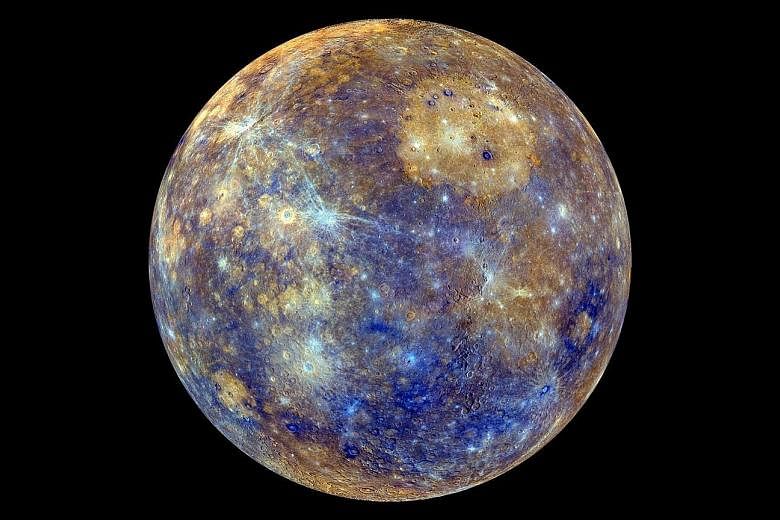PARIS • Is Mercury's core liquid or solid, and why is the core of Mercury - the smallest planet in our solar system - so big? What can the planet closest to the Sun tell us about how our solar system came into being?
An unmanned European-Japanese space mission, dubbed BepiColombo, blasted off early yesterday morning from French Guiana, to probe these and other mysteries. "BepiColombo is coming like a white knight with better and more precise data," said astronomer Alain Doressoundiram at the Paris Observatory.
"To understand how Earth was formed, we need to understand how all rocky planets formed", including Venus and Mars, he said.
"Mercury stands apart and we don't know why."
First, however, the suite of instruments on board the Ariane 5 rocket will have to travel seven years and nine million kilometres to reach their destination.
In a statement after the launch, ArianeGroup said the satellite had successfully escaped Earth's gravity field and was beginning its long journey, where it will reach speeds of up to 40,000kmh.
According to engineer Pierre Bousquet at France's National Centre for Space Research and head of the French team contributing to the mission, Mercury is "abnormally small", leading to speculation that it survived a massive collision in its youth.
"A huge crater visible on its surface could be the scar left over from that encounter," he said.
Finding out if this is true is on BepiColombo's "to do" list. This scenario would explain why Mercury's core accounts for a whopping 55 per cent of its mass, compared with 30 per cent for Earth.
Mercury is also the only rocky planet orbiting the Sun beside our own to have a magnetic field.
Magnetic fields are generated by a liquid core, but given its size, Mercury's should have grown cold and solid by now, as did Mars'.
This anomaly might be due to some feature of the core's composition, something BepiColombo's instruments will measure with much greater precision than has been possible so far.
The BepiColombo mission will deploy two spacecraft. The Mercury Planet Orbiter, built by the European Space Agency, will investigate planet's surface and interior composition.
The Mercury Magnetospheric Orbiter, made by the Japan Aerospace Exploration Agency, will study the region of space around the planet that is influenced by its magnetic field.
Compared with Mars, Venus, and Saturn, Mercury has barely been explored. Only two spacecraft have ever paid it a visit.
The new mission is named after Giuseppe (Bepi) Colombo, a brilliant Italian mathematician and engineer who first understood the relationship between Mercury's rotation and orbit.
AGENCE FRANCE-PRESSE

